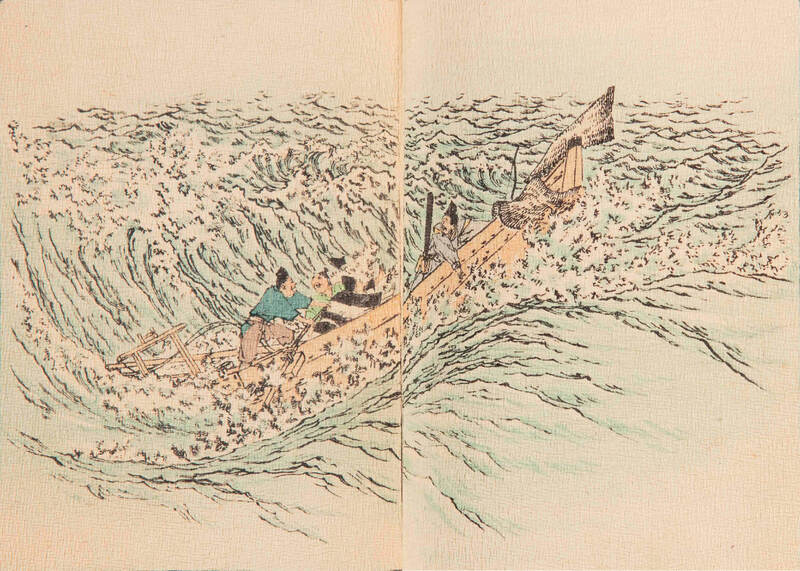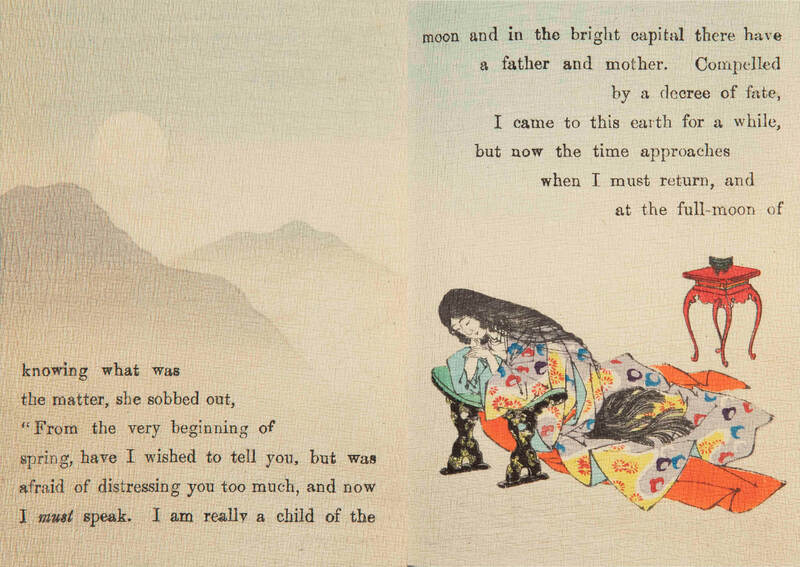Exhibit Contents
- Once Upon a Time
- Princess Splendor: The Wood Cutter's Daughter
Japanese Fairy Tales
Japanese fairy tales are largely shaped by the nation’s religious beliefs -- Shinto and Buddhism. Experts also believe that Japanese folklore takes inspiration from ancient Indian tales. Though these stories share characteristics with those from other regions, Japanese tales are generally distinctive due to the nation’s geography and history of isolation. Features of these stories include an emphasis on the beauty of nature, collectivistic culture over individualism, and spiritual rather than physical beauty. Furthermore, gender roles are often subverted in Japanese stories that are otherwise similar to Western tales.
Princess Splendor: The Wood Cutter's Daughter
This book beautifully illustrates “The Tale of the Bamboo Cutter,” a proto-science fictional story about a mysterious girl named Kaguya who is discovered as a baby inside the stalk of a glowing bamboo plant. Though not exactly a fairy tale, the story is a monogatari or a Japanese fictional prose narrative with fairy tale elements. The tale dates back to the 10th century and is considered the oldest extant Japanese prose narrative with the earliest surviving complete manuscript dated to 1592. Because the appeal of Princess Kaguya’s story has endured for centuries, modern adaptations are plentiful. Perhaps most notably, Studio Ghibli’s 2013 film The Tale of the Princess Kaguya was nominated for Best Animated Feature at the 87th Academy Awards.
Hasegawa Takejirō's Japanese Fairy Tale series
Princess Splendor is one of 30 stand-alone Japanese fairy tale books published by Hasegawa Takejirō between 1885 and 1922 . These works were significant in that they introduced traditional Japanese folktales to readers of European languages. Each volume is printed on a crêpe paper known as chirimen-bon, a Japanese textile with a fine, wrinkled feel. Hasegawa combined this material with multi-colored woodblock prints to add texture, thereby creating a new technique. As a result, the book drapes softly in the hands as though made of fabric. Princess Splendor is one of several books from Hasegawa’s series held in our collection. Additional volumes include The Boy Who Drew Cats, The Old Woman Who Lost Her Dumpling, and The Goblin Spider.





